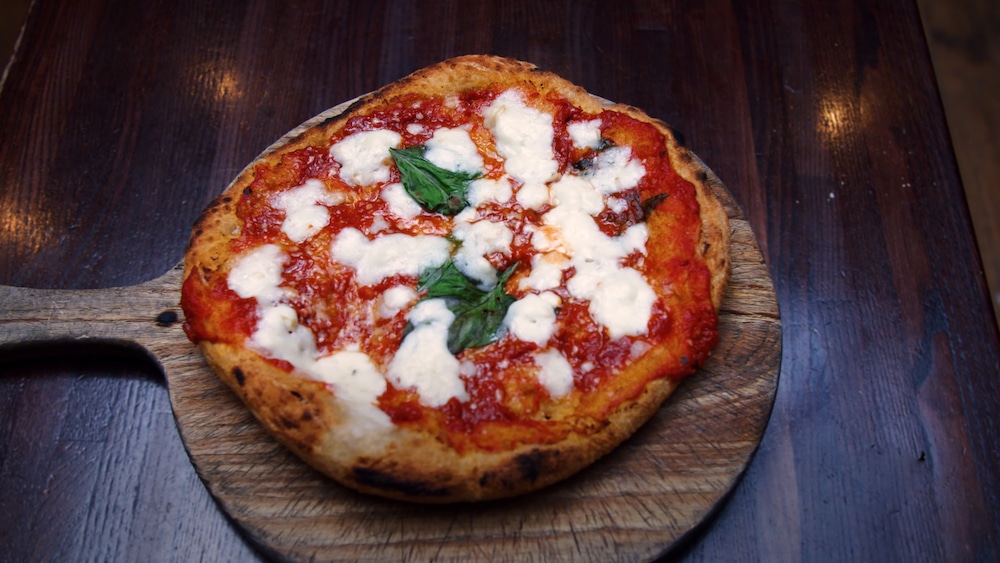Q: We occasionally have a pizza stick to the peel when we put it into the oven. It makes a real mess on the stones and slows our work flow down. What can we do to prevent our pizzas from sticking to the peel?
A: Nothing is worse than peeling a dressed pizza skin into the oven and pulling out a half-dressed pizza skin still clinging to the peel, especially when it happens at 7 p.m. on a Saturday night. There are a few things that can be done to reduce the possibility of the dough sticking to the peel.
First, let’s make sure we’re using the correct peel. Pizza peels come in two styles: metal and wood/composite. The wood/composite peel is the correct peel to use as a prep peel. The metal peel should be relegated to the oven as an oven peel only. Condensation is much less likely to form on the wood/composite peels, which happens due to temperature differences between the peel and the dough. This condensation can cause the dough to adhere to the peel.
The next thing to consider: What are you using for a peel dust? While plain flour works well, it isn’t very forgiving. If the dough is a little cold or sticky for some reason, you must be on top of your dough dressing game or you might end up with the dough sticking to the peel at the oven’s entrance. Some operators swear by cornmeal as a release material on the peel, and I can’t argue with them. It works great, much like thousands of tiny ball bearings under the dough skin. With just a little shake, the dressed dough will slide effortlessly off the peel.
Related: How to solve the problem of wet, sticky pizza dough
The only problem with cornmeal: It can impart grit to the bottom of the baked pizza. For some, this is desirable; for others, it is not. Then, too, the excess cornmeal has to be regularly swept out of the oven or it will show up on the bottoms of the baked pizzas as hard black spots.
Some operators advocate the use of semolina flour. Semolina flour is significantly coarser than regular flour, and it doesn’t absorb moisture as fast as regular flour does. For this reason, it makes for a pretty decent peel dust, a good compromise between regular flour and cornmeal.
Still other operators have turned to more “exotic” ingredients to use as a peel dust, such as wheat bran, rice flour, corn flour, coarse-ground whole-wheat flour, and even rye flour. Any of these materials make for an effective peel dust.
Related: The Dough Doctor offers 5 tips for a better delivery/carryout pizza
My favorite peel dust is a blend of equal parts of cornmeal, semolina flour and regular pizza flour. Don’t ask me why I like it–it just works for me. This blend empowers me to peel the dressed dough into the oven with authority and confidence, knowing the dough will slide off the peel every time.
Finally, here is a little trick to prevent dumping your pizza toppings onto a hot deck while the dough remains firmly affixed to the peel: As you’re taking the dressed dough skin to the oven, give it a little shake to confirm that the dough is not sticking to the peel. If it is sticking, it probably won’t free itself as you peel it into the oven. So now is your chance to address the problem by freeing the dough from the peel by hand, or, at worst, dumping the pizza and starting over. This surely beats transferring the mess to your oven stones, where it will continue to plague you until you’ve cleaned it off, not to mention the smoke and aroma of burning toppings emanating from your oven.
Tom Lehmann was the longtime director of bakery assistance for the American Institute of Baking and is now a pizza industry consultant.













